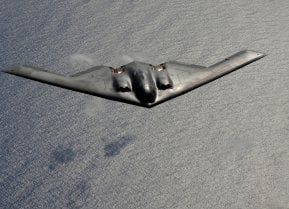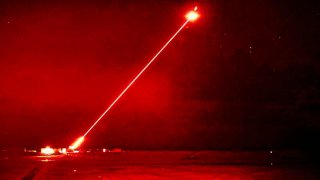DragonFire Laser: The Drone-Killer Weapon No Military Can Match
The future for the British military might be very near after the successful testing of a laser weapon. A directed energy weapon, the DragonFire has the potential to revolutionize air defense for the British armed forces.
The future for the British military might be very near after the successful testing of a laser weapon. A directed energy weapon, the DragonFire has the potential to revolutionize air defense for the British armed forces.
The DragonFire Laser
During advanced testing, the British military used the DragonFire laser to shoot down a drone.
The British military is careful with the details and specifications of the DragonFire. It is, after all, a highly advanced weapon system, and several countries would want to get their hands on it. Its range is classified, but the British Ministry of Defense stated that it is a line-of-sight weapon and “can engage with any visible target.”
As far as precision, London boasted that the directed energy weapon can hit a £1 coin at more than 3,000 feet away. That is an impressive accuracy.
Besides accuracy, the DragonFire promises to be quite a cost-saving weapon system. According to the British Ministry of Defense, the cost per shot is typically about $13, and using it for 10 seconds is the equivalent of the cost of using a regular heater for an hour. If those numbers continue to be similar, the DragonFire can offer a cost-effective solution to short-range interception missions.
Using an intense beam of light, directed energy weapon systems can engage targets at the speed of light, causing either physical damage to the aircraft, missile, or drone or destroying it by detonating any warheads, weapon systems, or fuel it might be carrying.
Both the British Army and Royal Navy are considering the DragonFire weapon system for their future air defense capabilities.
“This type of cutting-edge weaponry has the potential to revolutionise the battlespace by reducing the reliance on expensive ammunition, while also lowering the risk of collateral damage,” British Secretary of Defense Grant Shapps said in a press release.
The testing took place at the British military’s Hebrides Range and pitted the Dragon fire directed energy system against aerial targets. This was the first high-power firing of a laser weapon against aerial targets for the British military.
“Investments with industry partners in advanced technologies like DragonFire are crucial in a highly contested world, helping us maintain the battle-winning edge and keep the nation safe,” Shapps added.
Following the successful trials of the DragonFire, the British Ministry of Defense has expressed an intention to fund a program to take the technology from the testing phase into an actual operational capability.
“These trials have seen us take a huge step forward in realising the potential opportunities and understanding the threats posed by directed energy weapons. With our decades of knowledge, skills, and operational experience, Dstl’s expertise is critical to helping the armed forces prepare for the future,” Dr. Paul Hollinshead, the chief executive of the British Ministry of Defense’s Defence Science and Technology office, said.
As technology advances at a rapid speed, militaries across the world are seeking to edge over potential adversaries. With Great Power Competition in full swing, advanced military capabilities give a country deterrence and can make—if in numbers and of an advanced nature—potential adversaries think twice before raising tensions.
About the Author
Stavros Atlamazoglou is a seasoned defense journalist specializing in special operations and a Hellenic Army veteran (national service with the 575th Marine Battalion and Army HQ). He holds a BA from Johns Hopkins University and an MA from the Johns Hopkins School of Advanced International Studies (SAIS). His work has been featured in Business Insider, Sandboxx, and SOFREP. Email the author: [email protected].
Image Credit: British Military.


